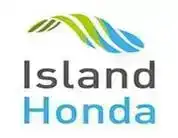April is a reminder for tsunami vigilance: emergency managers, survivor recount deadly event 78 years ago
Gov. Josh Green, M.D., proclaimed April as Tsunami Awareness Month in Hawai‘i, flanked by emergency managers from across the state. The Governor’s proclamation highlighted the importance of Awareness, Education and Action in preparing for tsunamis.
“Being aware, educated and ready to take action will save lives,” he said.
Representatives from the Pacific Tsunami Warning Center (PTWC), International Tsunami Information Center (ITIC), the Hawai‘i Emergency Management Agency (HI-EMA) and county emergency management agencies attended to highlight awareness of tsunami alerts and warning protocols throughout the state.
“Tsunamis can strike with very little warning and devastate communities,” James Barros, HI-EMA administrator, said. “With Tsunami Awareness Month beginning on the anniversary of the deadly April Fools’ Day tsunami in 1946, we’re reminded not only of the damage and sorrow it caused, but also that we need to be prepared for the next one.”

“April 1—April Fool’s Day—78 years ago a magnitude 8.6 earthquake from the Aleutian Islands generated a tsunami that took about four-and-a-half hours to hit our state,” said Laura Kong, Ph.D., director of ITIC. “By 6:30 a.m., waves that would reach 53 feet on the Big Island, 33 feet on Maui, 54 feet on Molokaʻi, 35 feet on Oʻahu and 45 feet on Kauaʻi, began to arrive.”
The event resulted in $340 million in damage and the loss of nearly 159 people in the state, including 96 in Hilo.
“There is no ‘tsunami season.’ Hawai‘i must always be prepared to take action,” said Dr. Kong, noting that 293 people have been killed by tsunamis since 1900.

“April 1, 1946, I was 6 years old and living with my grandparents in Keaukaha, outside of Hilo,” said Jeanne Johnston, who survived the deadly tsunami event 78 years ago. “My 4-year-old brother and I were getting ready for school and I heard some noise outside.”
Out of curiosity, the two kids went to the end of the driveway, which was located across the street from the beach. “We saw cars and they were honking their horns and people were shouting. There was water on the road… and in the yard,” Johnston recalled. “We couldn’t figure it out. It was a bright sunny day.”

Johnston said she and her brother went back in the house and up to the second floor where she looked out the window and observed water rising to the clothesline below, about 5 feet off the ground.
“At that point, the car was submerged in water and the horn started to honk,” said Johnston. The noise awakened her uncle who recognized what was happening, and responded with urgency. When the water receded, Johnston said her grandparents refused to leave the home. She left with her uncle and brother and went into the jungle behind Keaukaha where another uncle who escaped with other children in his care, was chopping down the maile pilau and lauhala.
“They were saying, ‘Run! Run!,’ but we were on ʻaʻā lava with bare feet, and I looked down and I saw the water coming up through the ʻaʻā lava. We finally got to the radio tower and were headed for the airport, but could not get that far,” said Johnston. The adults in her company thought they would be safe and stayed a couple of hours before returning from where they had come.
“When we got to the street, I looked out to the street and there was debris everywhere,” said Johnston.
“We had no warning that day either… My advice is to prepare. Have a plan,” she advised. “Please be prepared. Get your family and make a family plan. Make sure everybody knows where to go and what to do in case of different disasters.”
Tsunamis are generated by earthquakes, volcanoes, landslides, or other powerful events that forcibly move large amounts of water. They can produce a wall of water 50 feet high or more, and travel hundreds of yards inland when they reach shore. Hawai‘i faces hazards both from distant tsunamis, which take hours to reach the state, and local tsunamis which can arrive in minutes after an earthquake within the state.
“Tsunamis generated throughout the Pacific Rim of Fire in recent years from Tonga to Japan have left vast devastation in their wakes,” said Chip McCreery, Ph.D., director of PTWC. “We don’t know where or when a big event might strike. Preparing today will help us all to respond more quickly and effectively in a real emergency.”
Barros agreed. “Being prepared, knowing evacuation routes, and having a plan with family and neighbors makes you part of the solution if a devastating event like a tsunami hits.”
HI-EMA has initiated a pilot project to increase youth awareness through selected ambassadors from St. Louis School. The ambassadors toured the Pacific Tsunami Museum in Hilo and will share what they learned with fellow students. HI-EMA intends to broaden its youth outreach to other schools.
One-stop information on Hawai‘i tsunamis is available at hawaiitsunami.org, or contact ITIC at [email protected].
Visit ready.hawaii.gov for more information on preparing for tsunamis and other hazards.
*Maui Now’s Wendy Osher contributed to this report.










